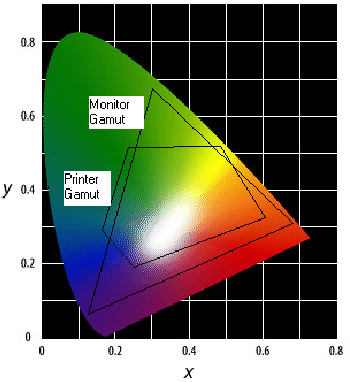Last Updated February 11, 2009
The CIE (Commission Internationale de l'Eclairage) conducted
experiments in the 1930's to determine how primary components
should be added in order to reproduce colours. The experiments
revealed that to produce some colours, it was necessary to
subtract a component of light. This is because when two primaries
are added the saturation decreases. It was impossible to produce a
maximally saturated colour by mixing two others. To create such
colours a negative component is required. To avoid the problem of
having negative components, the CIE devised three supersaturated
(non-realizable) colours X, Y, Z, which, when additively mixed
(i.e. without negative co-efficients) can produce all perceivable
colours. These primaries are devised from the colour sensitivity
distribution of the human eye, this allows the system to represent
all human perceivable colours. In this system the ![]() colour the
intensity or luminosity of the light. Applying some affine
transformations and choosing an appropriate viewpoint, the CIE
colour space can be viewed in 2 dimensions (figure below).
colour the
intensity or luminosity of the light. Applying some affine
transformations and choosing an appropriate viewpoint, the CIE
colour space can be viewed in 2 dimensions (figure below).
 |
This colour model is difficult to use, as X,Y and Z do not correspond to real colours. Also, some CIE colours cannot be displayed on a traditional monitor as these work by adding red, green and blue light. It was not designed as colour selection tool, but as an international standard for accurate colour description, instruments are available which can measure the X,Y & Z components from any give colour sample.
A somewhat simplified and perceptually linear version of CIEXYZ used today is CIELab.
L= luminosity
a = position on Red-Green opponent channel ( -ive= red, +ive=green)
b = position on Yellow-Blue opponent channel ( -ive= yellow, +ive=blue)
The colour gamut of a printer is also shown, this gamut is not a simple triangle because of the mechanisim in which the inks are placed on the paper. Note that a printer cannot reproduce all the colours of a monitor and there are some printer colours which cannot be shown on a monitor.
© Ken Power 1996-2016